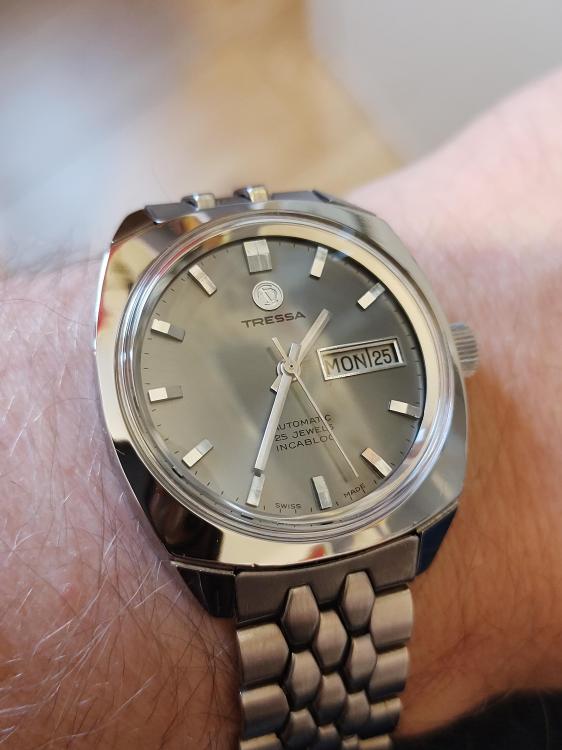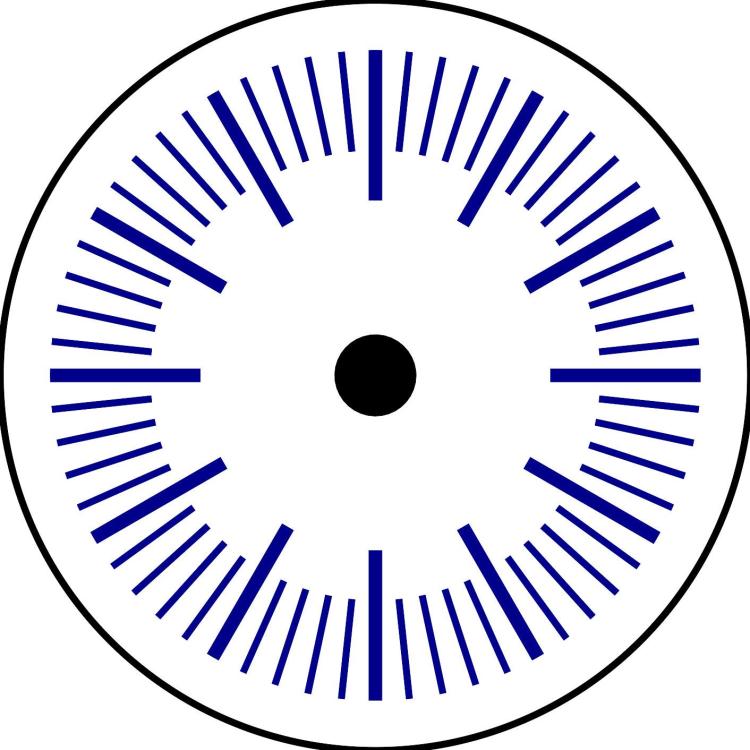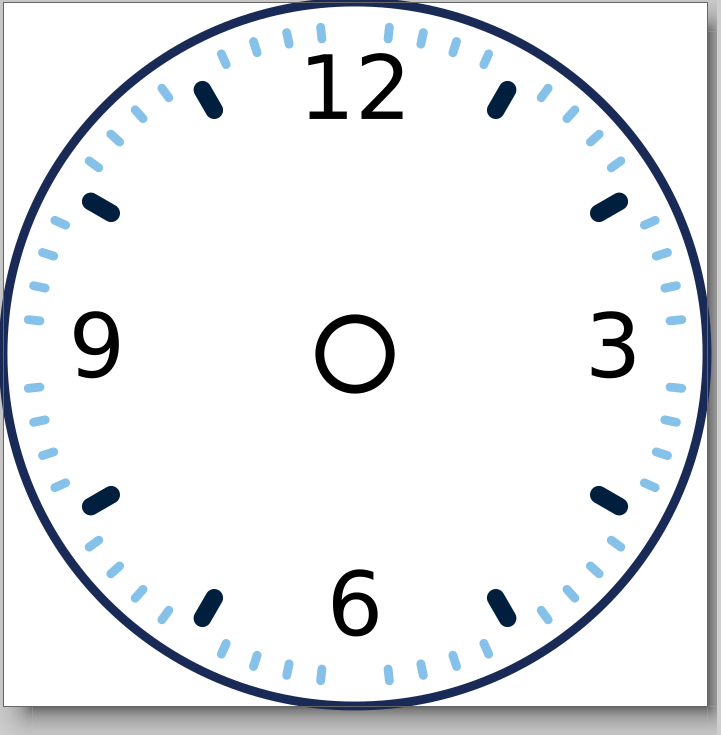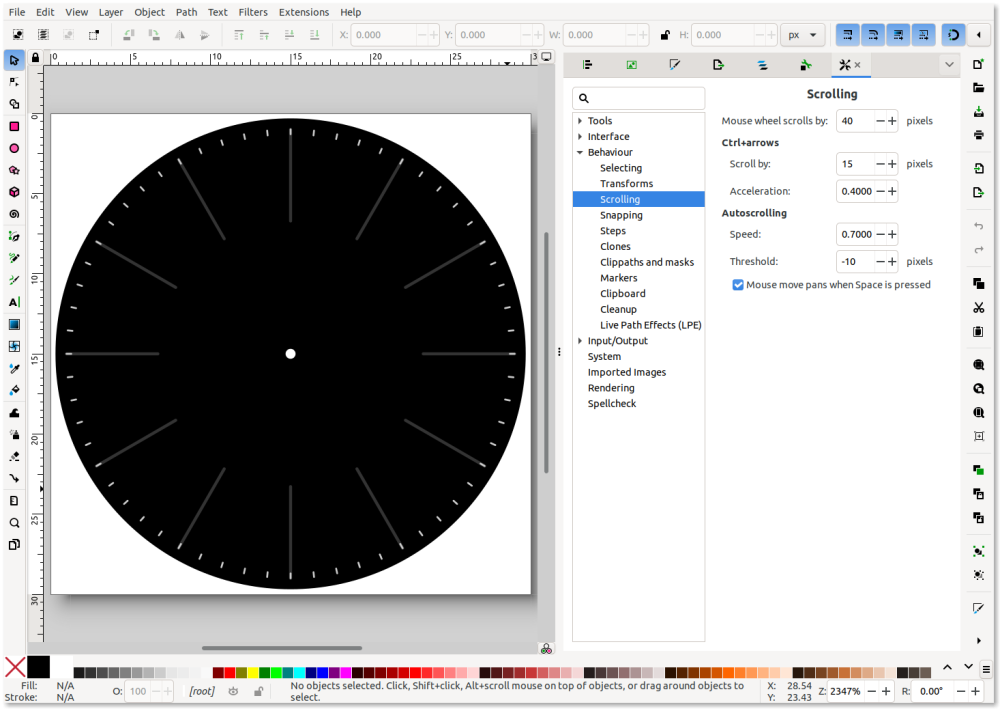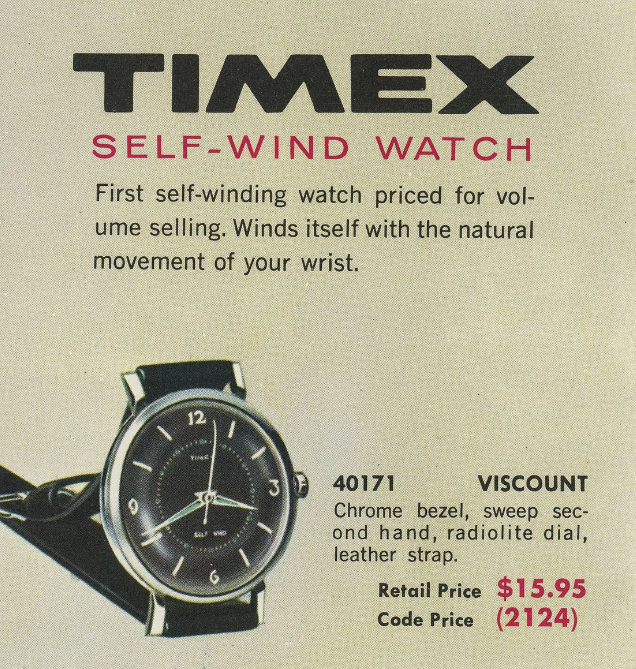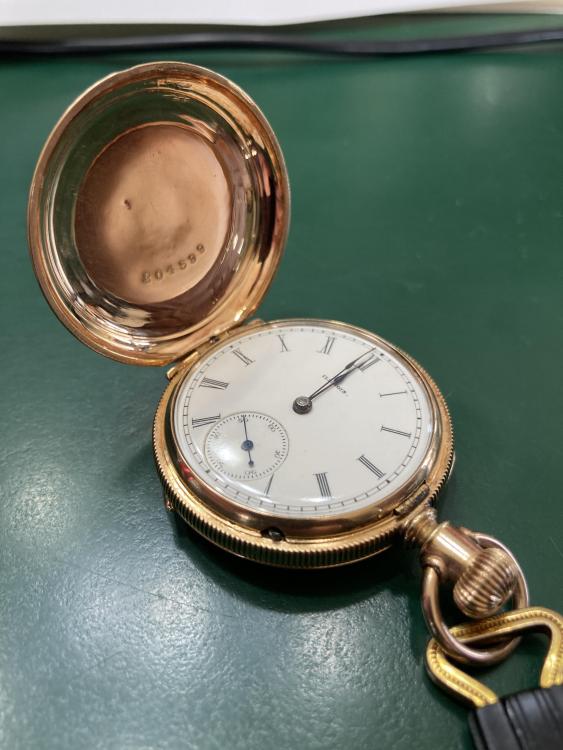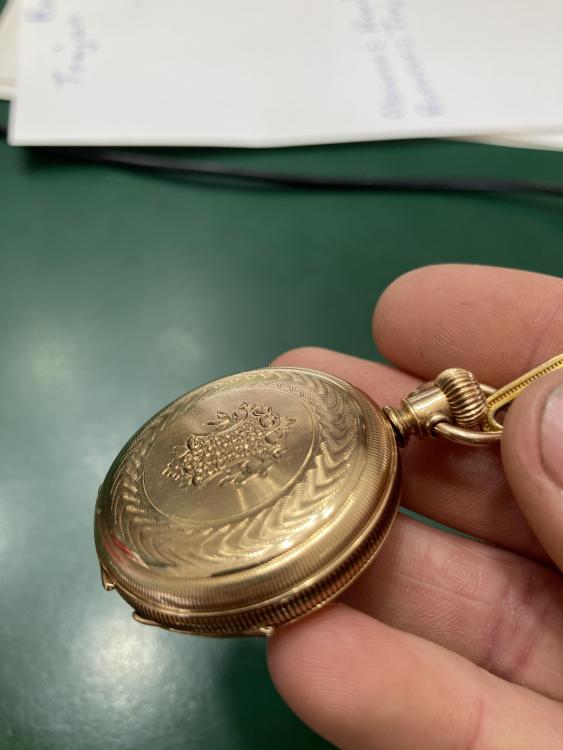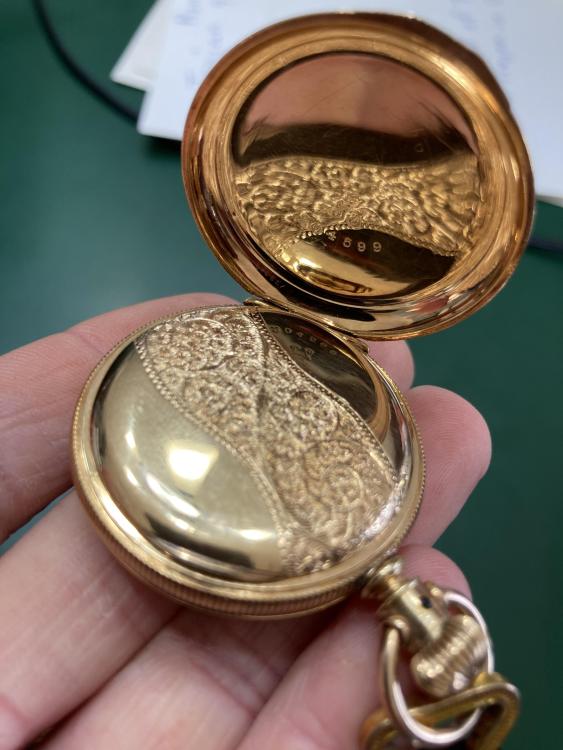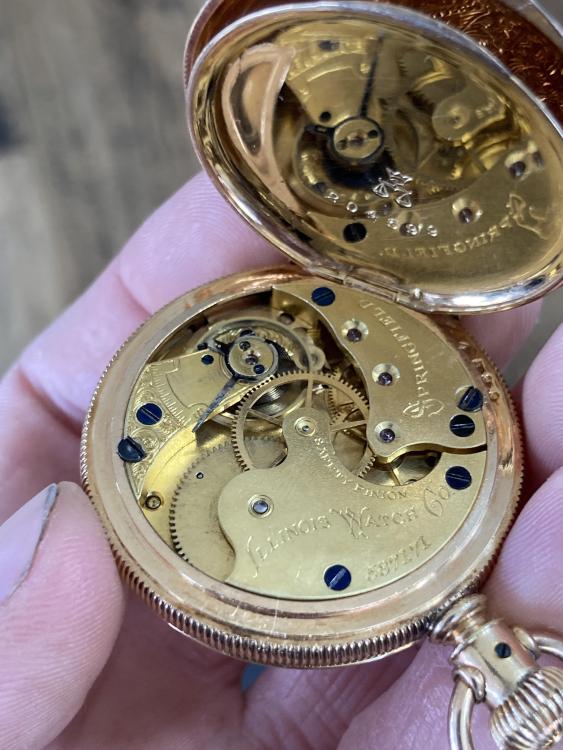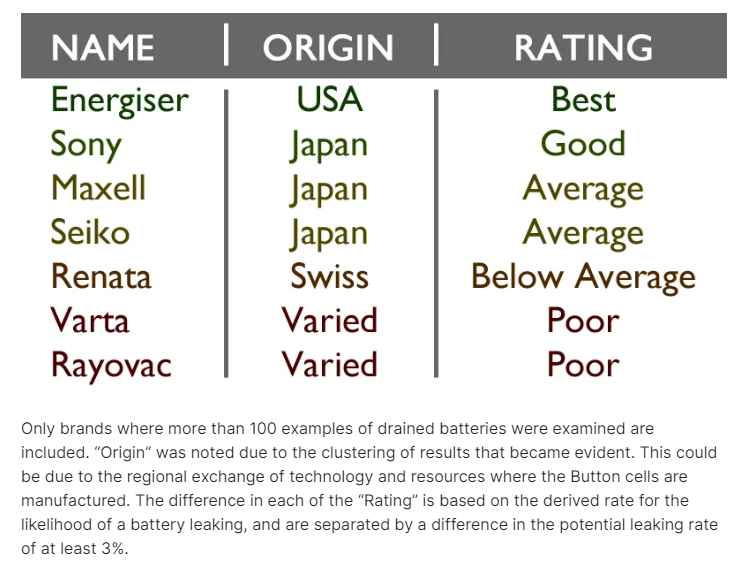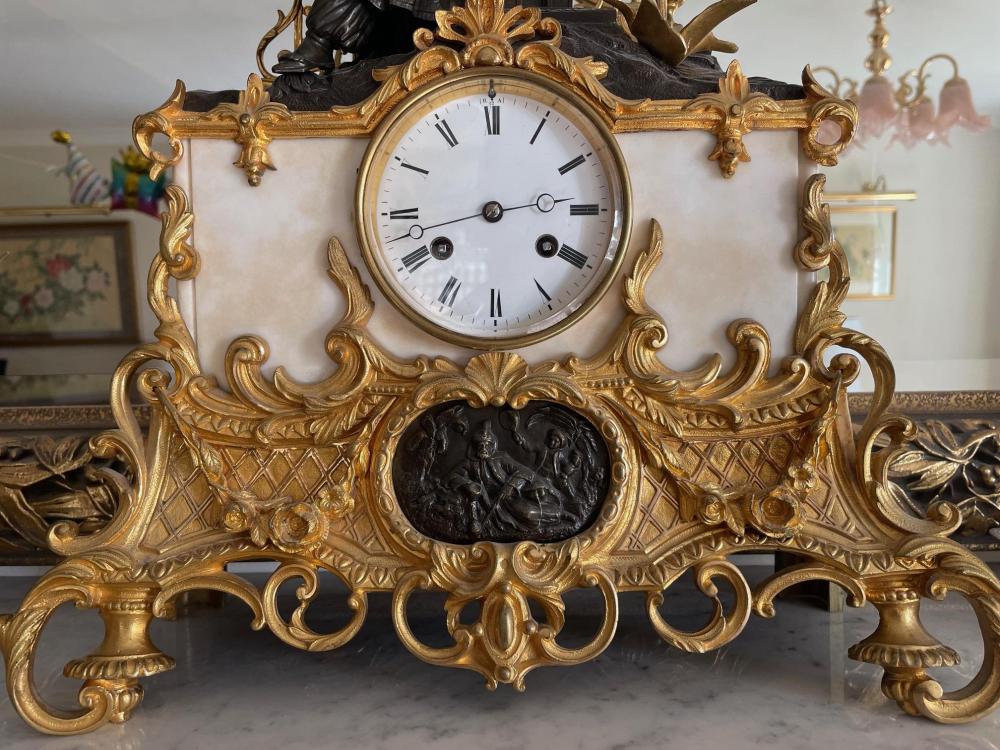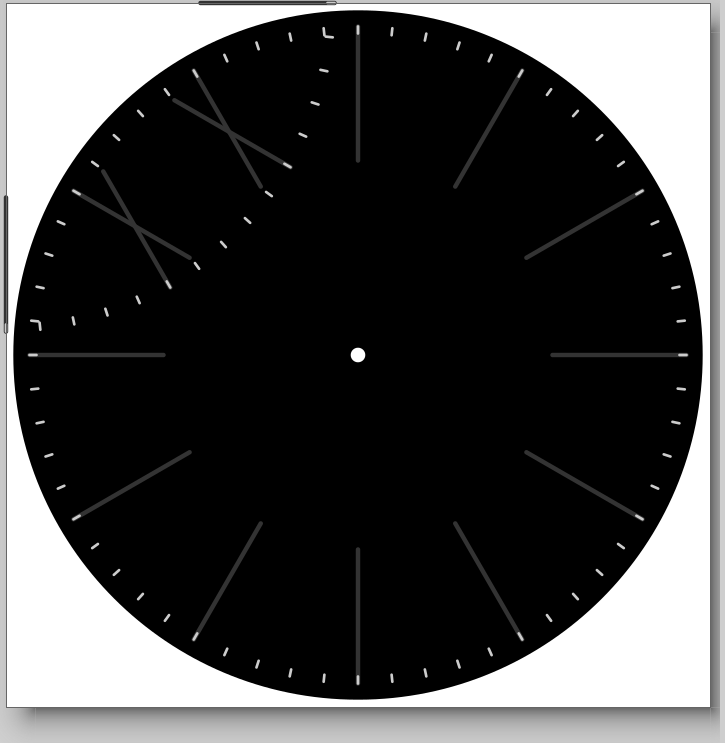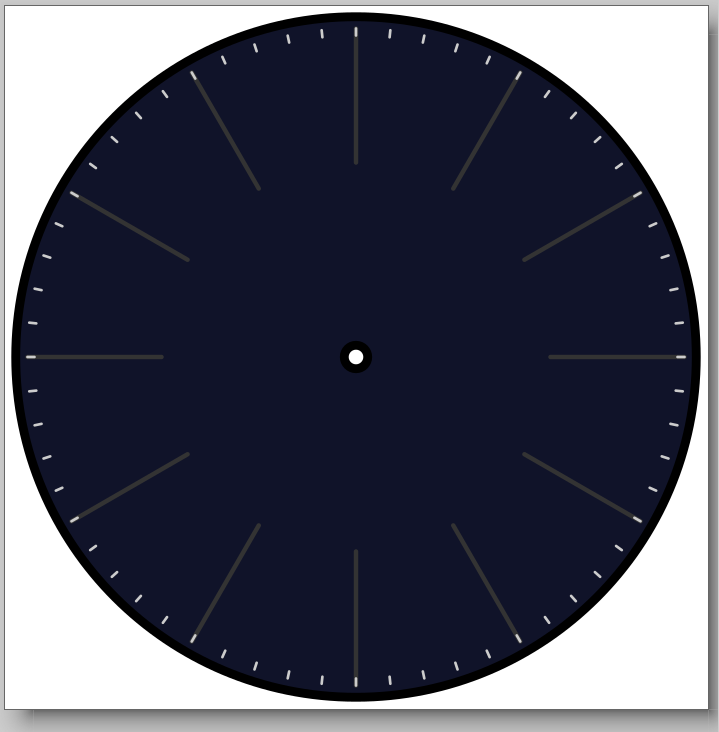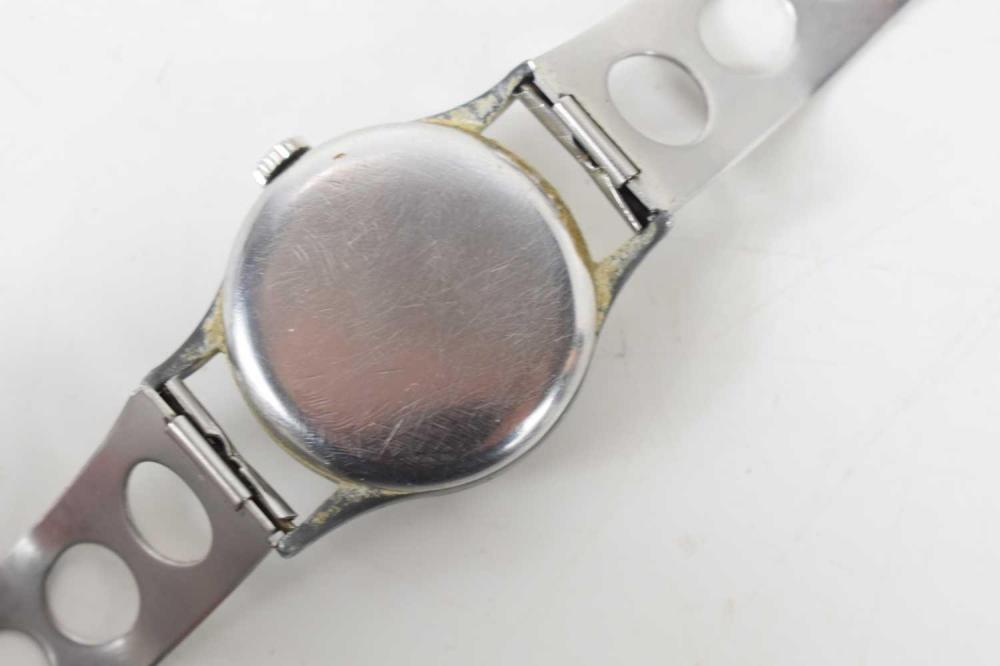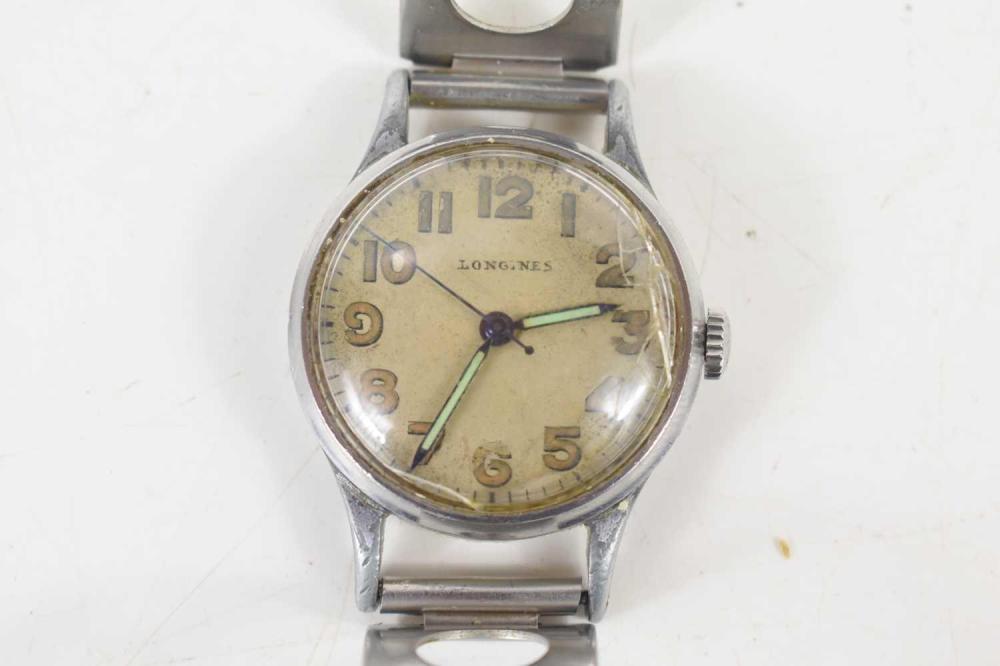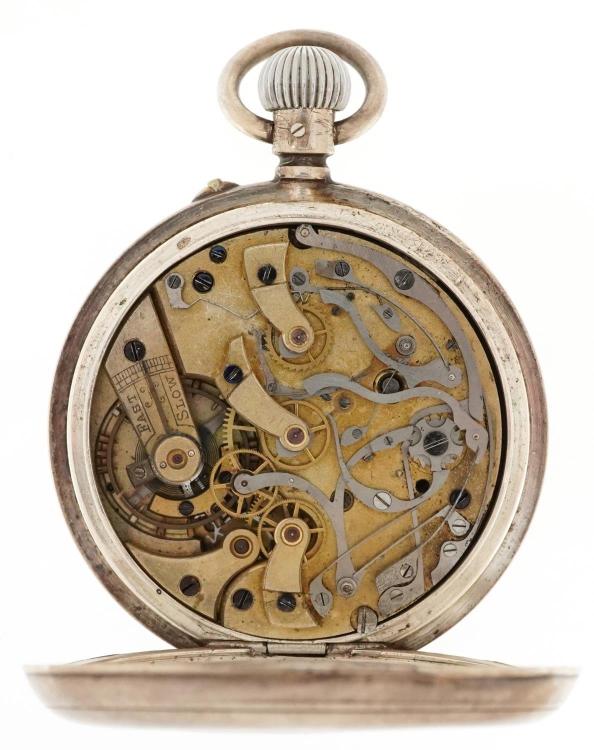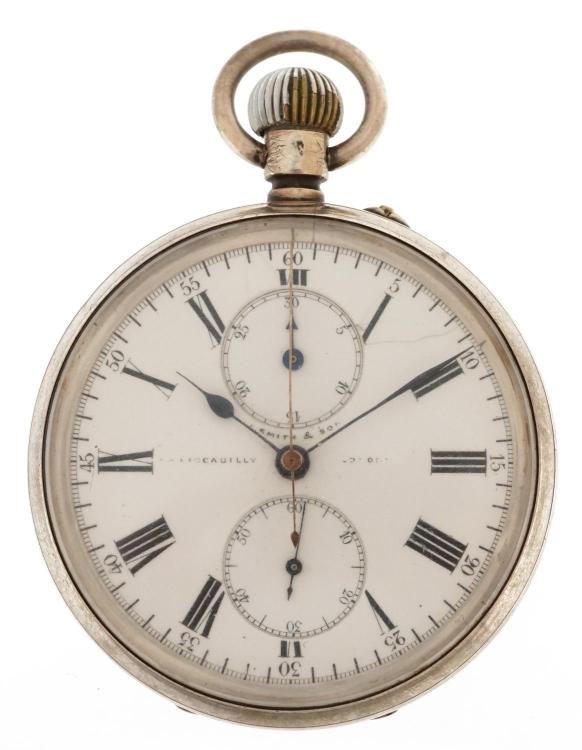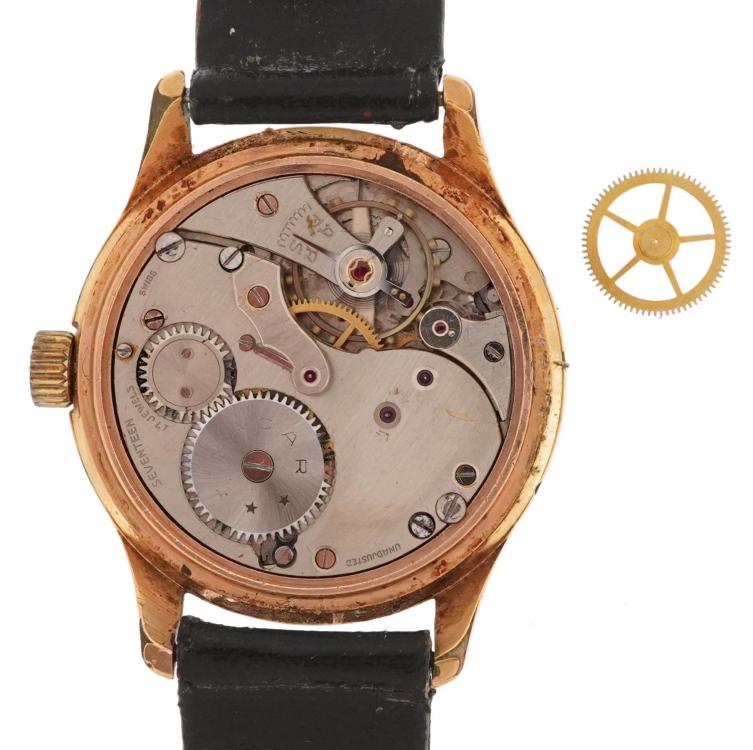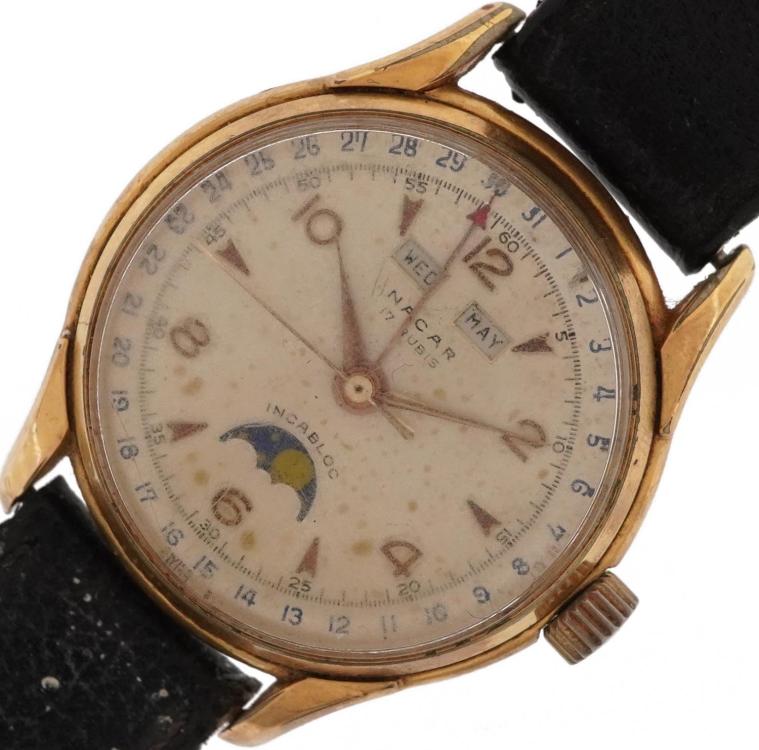Leaderboard
Popular Content
Showing content with the highest reputation on 03/26/24 in all areas
-
Hi @Neverenoughwatches They charge £200 because they can and there are enough idiots to pay for a name like Micheal Kors , Calvin Kline, Gucci etc they neither know or understand what’s behind the oversize dial. The board material is fibre glass and the gunk denatures the resin, it loves brass and can eat lots of it in time. Deffo bin fodder. May be able to salvage some bits though.2 points
-
2 points
-
This started as a "Bored on a Sunday afternoon, I wonder if that might work..." task, in the thread "Revisiting an old Hobby" here I've decided to create a thread just for this topic as I can see there is interest in this subject. My initial attempt used ChatGPT to create an SVG (Scaleable vector graphic) using the popular scripting language "Python" to produce the SVG programmatically. The resultant SVG could then be used to create a watch dial. The advantage of doing this using software is that you get very precise results. One of the issues however is that AI can't "see" the results, and it has no ability to check any code it generates to ensure that it is sane. Generating images with computer code is obviously nothing new, so why use AI and why use SVG and why Python? I used AI and particularly ChatGPT because one of the tasks it is fairly proficient at is writing computer code. I'm also reasonably good at this task, which is probably just as well, since I do it for a living. I decided to use SVG for a couple of reason. Firstly because it is suited to this kind of image, and secondly because an SVG file is actually a text file, which you can examine with a text editor, and create fairly easily with a computer program. Python seemed a good choice, not only because we use it at work, but also because it produces relatively clean, readable code, and has a whole bunch of libraries to simplify the tasks needed to create images. It was quite rewarding to find that ChatGPT's coding abilities seem to have improved somewhat since I first "played" with it when it hit the headlines a couple of years ago, and as a result of these improvements, I managed to get a simple, working python watch dial creating script with relative ease. If you want to cut through all of the static and just run some scripts, I have created a git repo for that -> https://github.com/pingumacpenguin/ChatGPT-WatchDialCoding Feel free to provide any examples and scripts of your own and I can add them, or add you as a contributor to the git project and you can make your own changes.1 point
-
This video demonstrates how to hold a burnisher comfortably, safely, and efficiently for burnishing a wheel pivot in a Jacot tool—a huge thank you to @nickelsilver, who generously shared this information. I can’t thank you enough! https://www.watchrepairtalk.com/topic/28602-longines-balance-staff-pivots-are-they-too-flat/page/2/#comment-2418871 point
-
1 point
-
1 point
-
This is grade 131 Illinois guilt movement made in 1887. I purchased this watch in a lot of two pocket watches at an estate auction a few years ago, it was tagged with a paper tag which made me think it had been part of someone else's collection. This watch is in immaculate shape especially considering the age, the thin glass crystal is perfect with a flawless dial. I performed no work on the case other than an ultrasonic cleaning. The movement was not running and was full of sewing machine oil or something like that. It needed a pallet jewel and I put in a "better" mainspring out of another grade 131 movement. Later on, I adjusted the mean time screws so that I could centre the regulator as it was running 1 minute fast set all the way slow. I seem to recall it was fairly accurate, but It was awhile ago, and it is not a watch I wear frequently.1 point
-
I'm an absolute chrono n00b, but as someone who's restored a couple Seiko 6139Bs that are notorous for low amplitudes, I'd be delighted with 254 degrees of amplitude.1 point
-
1 point
-
1 point
-
I think a bit more than ipa is needed, its swimming in the stuff, so much so that i was starting to think it was water. But no steel corrosion and the fluid has a thickness to it like thin oil. A Jap movement Hattori, 13 quid so i ordered another, the module is completely shafted. Just out of a Kors fashion watch, i dont know how they can charge 200 quid for these things. Hi WW .The base material, wheels and ss cover plates are unaffected even the copper windings look ok on the coils. But the leakage seems to love eating brass and the material the board is made of ? Is soft in places. You have to know when to not even attempt a clean up.1 point
-
Hi @Neverenoughwatches that’s a mess, mind you the juice from the batteries is alkaline and highly corrosive ihave see negative terminals dissolved away, nothing left except a heap of crusty and it burns if left on the skin Do you think that it’s the reason many quartz watches use plastic base plates so that the gunge doesn’t eat the watch.1 point
-
What watch is it from, are replacement movements available? If not a quick dip in IPA and all will be fine. Hehe.1 point
-
Here is a a list of the types of American pocket watch Crystals. It might interest you. https://www.daveswatchparts.com/pwcrystals.html1 point
-
Thank you for your introduction and welcome to this friendly forum. We all look forward to your contributions and continued involvement. We like new members to make an introduction before posting. Is it a pendulum movement or floating balance? As clockboy has said what the problems could be I totally agree. You will need to remove the springs from the barrels so you will need a clock mainspring winder, springs can become week and will not work properly due to lack of oil and dirt. Photos would be good we might be able to spot something. Please make sure they are clear , both plates and the inside of the movement.1 point
-
Hi welcome to the forum. The issue you are experiencing with the clock is typical of a clock that needs servicing with a high probability that bushes need replacing. When fully wound this issue is overcome but as the mainspring unwinds there is less power and the clock slows.Looking at the barrel barrel bushes would be a good starting point1 point
-
They wouldn't happen to have an internal spline too? Reason for asking is that CousinsUK sells these Tube-keys specific for Omega Seamaster, be it for a different case-number (scroll to the bottom of the page): https://www.cousinsuk.com/product/multi-function-fitting-removing-tools-horotec?code=P47513 You may have to warm up the case as those tubes may have been placed with some type of Loctite. As last resort, you could try a pin-vice.1 point
-
what exactly do you mean by a data sheets? Like a parts list or service manual? Service manuals are really hard to find not that they don't exist or just hard to find in PDF form because typically things were scanned for parts not for servicing. Sometimes even watches that you have service manuals the cover page got scanned in the parts got scanned in the service part was not scanned some most PDFs are four parts. But there's also websites you go to for parts like yours one http://cgi.julesborel.com/ then ultimately get this page parts list and you can click on the individual parts and see what it cross-references to get part numbers and you can also go to the homepage and see if any of the parts are still available. http://cgi.julesborel.com/cgi-bin/matcgi2?ref=BUL_5AT1 point
-
Where did you buy it from? Yes, you can fix it. Re-pinning the hairspring to the collet is not difficult ... once you have lots of practice working with tweezers. Give it a go, what could go wrong?. You can always buy another. I would ask for a refund. If you want to give it a go, let us know, and we can post instructions. BTW Do you think that if I read up a bit about surgery I would be OK to go and do my first op, or do you think I should, maybe, practice a bit first ?1 point
-
yes we haven't discussed something but it was covered with the question I asked that I quoted above. Did you measure the old and the new staff all of the dimensions? Often times when the staff is wrong other things will be wrong and even if it's the right staff it still always good the measure just to make sure to avoid unpleasant surprises like roller tables that don't fit. Oftentimes they'll be too loose or they'll be extremely tight. Because unfortunately balance staffs seem to have variations even if the parts book indicates they do not. But a lot of times they will of variations especially if the watch was made over time which is why it's very important to measure the before staff all dimensions you can and the replacement staff to make sure they're exactly the same it's much easier to deal with something before it's attached to the balance wheel1 point
-
So the movement was returned to home yesterday afternoon, and my friends who own it are delighted it's now running as is should. (I've not got the whole clock in, as when I was far enough away to see the full height, too much of the room was visible and I did not want to invade their privacy like that).1 point
-
AI can create very interesting graphical images too as you have shown. As to the code ChatGPT produces, if you look at the examples you can see they meet the brief of the "customer" i.e. me. but it takes a lot of prompting to get things right. For example it decided that a for loop from 1 to 61 and from 1 to 13 would produce the correct number of minute and hour markers. While this did actually work, since hour 1 landed on the same location as hour 61, you are correct in your assessment that it produces results that need to be carefully examined. It also tried to add "symmetrical" hour markers to another version of the code, resulting in a very weird (but quite eye catching) dial with a bunch of markers in a curve in the top left of the dial. Because it is producing Python code, we can simply modify that code to produce something more akin to what we want. import svgwrite import math def generate_watch_dial(): # Create a new SVG drawing drawing = svgwrite.Drawing('bauhaus_watch_dial.svg', size=(30, 30), profile='full') # Define styles hour_marker_style = {"stroke": "#333333", "stroke-width": "0.05mm", "fill": "none", "stroke-linecap": "round"} # Dark grey color for hour markers minute_marker_style = {"stroke": "#CCCCCC", "stroke-width": "0.03mm", "fill": "none", "stroke-linecap": "round"} # Light grey color for minute markers center_circle_style = {"stroke": "#000000", "stroke-width": "0.1mm", "fill": "#FFFFFF"} # White color for center circle # Draw outer circle # drawing.add(drawing.circle(center=(15, 15), r=14.5, **{"stroke": "#000000", "stroke-width": "0.1mm", "fill": "#000000"})) # Black background drawing.add(drawing.circle(center=(15, 15), r=14.5, **{"stroke": "#000000", "stroke-width": "0.1mm", "fill": "#101329"})) # Navy Blue`ZZ background # Draw hour markers hour_marker_length = 14 minute_marker_length = hour_marker_length * 0.592 # Adjusted length for minute markers for marker in range(0, 360, 30): angle = math.radians(marker) x1 = 15 + hour_marker_length * math.cos(angle) y1 = 15 + hour_marker_length * math.sin(angle) x2 = 15 + minute_marker_length * math.cos(angle) y2 = 15 + minute_marker_length * math.sin(angle) drawing.add(drawing.line(start=(x1, y1), end=(x2, y2), **hour_marker_style)) # drawing.add(drawing.line(start=(15 - x1, 15 - y1), end=(15 - x2, 15 - y2), **hour_marker_style)) # Add marker on the opposite side for symmetry # Draw minute markers minute_marker_length = 14 for marker in range(0, 360, 6): angle = math.radians(marker) x1 = 15 + minute_marker_length * math.cos(angle) y1 = 15 + minute_marker_length * math.sin(angle) x2 = 15 + (minute_marker_length - 0.3) * math.cos(angle) # Adjusted length for minute markers y2 = 15 + (minute_marker_length - 0.3) * math.sin(angle) # Adjusted length for minute markers drawing.add(drawing.line(start=(x1, y1), end=(x2, y2), **minute_marker_style)) # drawing.add(drawing.line(start=(15 - x1, 15 - y1), end=(15 - x2, 15 - y2), **minute_marker_style)) # Add marker on the opposite side for symmetry # Draw center circle drawing.add(drawing.circle(center=(15, 15), r=0.5, **center_circle_style)) # Save the drawing to a file drawing.save() # Generate the watch dial generate_watch_dial() By commenting out the two spurious "Add marker...." lines that produce the garbage in the top left corner and then changing the background to navy blue, we get the blue dial above. This might actually make quite an eye catching dial if suitably printed and applied to a dial disk. Like any computer system, if you put garbage in, you certainly get garbage out. If your definition of the problem is sufficiently ambiguous then it may produce something somewhat different from what you intend. That is however also true of human coders.1 point
-
They are cheap fashion watches, the pocket watches probably have a very cheap quartz movement in them, the wrist watch appears to be a chronograph, which if it actually is, is still probably not worth more than what a proper watchmaker would charge to change the battery.1 point
-
If it's a thick case (diver), the signal can become too weak. The result is then often that the dots on the graph become more scattered (Weishi). Increasing the gain (Weishi 1900) a bit can then help. I've also experienced that the readings can become unreliable if the signal is too strong (noisy movement). This usually only happens when the movement hasn't been cased. TMs are very useful but can't always be trusted. In my opinion, a TM can't replace testing the watch on the wrist or on a Cyclotest watch winder.1 point
-
glad you got it, some chemicals dissolve debris better than others, One-Dip [hairspring cleaner], sometimes denatured alcohol/acetone/mek will do it with tapered Qtip on that dirty bridge ....1 point
-
1 point
-
My point is that there is usually little difference in construction between 'high end' and 'standard' movements. It's usually better quality balance/hairspring, finishing, jewelling etc. Certainly nothing you would notice when learning to work on watches. I have watches which cost me £30-£50 with the same movements (eg ETA) as 'higher end' Tudor, Breitling etc, but as it doesn't say that on the dial, they cost 1/10 the price., but give similar performance. I go on the movement, not what it says on the dial. If you were learning to rebuild engines, working on a Ford would give you the same skills as working on a Ferrari engine, only a lot cheaper. I'm just timing a Rotary with a Peseux 330 movement I bought for £19. After 24h it's within 1s. And looking at the quality of the parts, I don't see much difference between it and any of my Omega's. Good luck with the new balance. Overcoil hairsprings are notoriously difficult to manipulate - probably the thing I least like doing.1 point
-
Just box it up and store it for a few weeks. Move on to another project watch. As you gain skills and experience, go back to this one with a fresh set of eyes and see if you can make progress. No rush if it is for your personal collection or to keep as a practice watch! Your journey is just beginning...1 point




